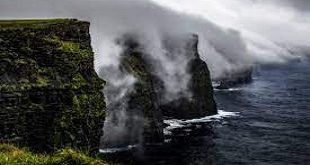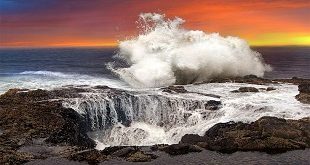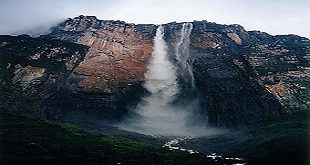Introduction:
Tongariro National Park, which is located in the center of the North Island of New Zealand, is a reminder of the breathtaking beauty that Mother Nature has to offer. In addition to being the oldest national park in New Zealand, this UNESCO World Heritage Site, established in 1887, is a captivating landscape that seamlessly combines geological wonders, vibrant ecosystems, and cultural significance. Traversing more than 795 square kilometers, Tongariro Public Park is an objective that leaves guests enchanted, offering a visual dining experience of emerald lakes, rough volcanic landscape, and rich Maori social legacy.
Geological Extravaganzas:
The distinctive and diverse geological landscape of Tongariro National Park is one of the park’s most striking features. Tongariro, Ngauruhoe, and Ruapehu—three active volcanoes that each contribute to the park’s dramatic scenery—rule the area. The entirely conelike state of Mount Ngauruhoe, frequently alluded to as “Mount Destruction” from the popular “Ruler of the Rings” set of three, is a notorious outline against the New Zealand sky.
The Tongariro High Intersection, an incredibly famous climbing trail, takes guests on an excursion through this volcanic wonderland. The path twists through pits, along old magma streams, and gives all encompassing perspectives on the encompassing mountains. The surreal Emerald Lakes, whose vivid hues are the result of minerals evaporating from the nearby thermal areas, are encountered by hikers on the way. The juxtaposition of the distinctive blue-green lakes against the rough volcanic scene is an incredible sight and a demonstration of the recreation area’s geographical uniqueness.
Vegetation:
In addition to being a marvel of geology, Tongariro National Park is also a haven for a wide variety of plants and animals. Regardless of the brutal volcanic circumstances, the recreation area upholds an assortment of vegetation, from solid tussock grasses to sensitive snow capped blossoms. Native beech forests cover the lower slopes, giving the barren terrain a hint of green.
Additionally, the park is home to a variety of bird species, including the well-known kiwi, the New Zealand falcon, and the North Island kaka. The Tama Lakes, settled in the shadows of Mount Ruapehu, give a peaceful living space to waterfowl and proposition birdwatchers a one of a kind chance to notice these avian occupants right at home.
Cultural Relevance:
Past its land and biological marvels, Tongariro Public Park holds massive social importance for the Maori public. In recognition of the park’s cultural and natural significance, it was given the status of a dual World Heritage Site in 1993. The local Maori people regard the mountains in the park, particularly Mount Ruapehu, as sacred, and their legends are woven into the landscape.
With a smattering of spiritual and historical landmarks, the park is a living cultural landscape. The Whakapapa Town, close to the foundation of Mount Ruapehu, is home to the Ngati Tuwharetoa individuals and fills in as an entryway to the recreation area. In Tongariro National Park, visitors can participate in cultural experiences like guided tours that teach them about the stories and traditions of the Maori people. These experiences help them develop a profound appreciation for how nature and culture are intertwined.
Activities in the wild:
Tongariro Public Park isn’t simply an inactive scene; It encourages visitors to participate in a variety of outdoor pursuits. For hikers looking for an experience that is both challenging and rewarding, the Tongariro Alpine Crossing, which was mentioned earlier, is a must-do. Throughout the cold weather months, the recreation area changes into a colder time of year wonderland, drawing in skiers and snowboarders to the slants of Mount Ruapehu.
The park has a network of shorter walks for people who want to spend more time relaxing and caters to different fitness levels. The Taranaki Falls Track, for example, furnishes a moderately simple climb with stunning perspectives on the Taranaki Falls and the encompassing volcanic scene.
Conserving and Preserving:
As an UNESCO World Legacy Site, Tongariro Public Park isn’t just an objective for explorers yet in addition a safeguarded region committed to the protection of its extraordinary environments. The Branch of Preservation (DOC) works enthusiastically to oversee and safeguard the recreation area’s normal and social qualities, guaranteeing that people in the future can keep on wondering about its excellence.
Guests are urged to stick to Leave No Follow standards, limiting their effect on the climate. This dedication to eco-tourism contributes to the preservation of the park’s pristine state, allowing its natural beauty to endure for many years to come.
Conclusion:
Tongariro National Park is a shining example of nature’s beauty with its geological wonders, diverse ecosystems, cultural significance, and abundance of outdoor activities. The park offers a holistic and enriching experience, whether one is captivated by the otherworldly landscapes, intrigued by Maori legends, or seeking adventure on the hiking trails. Let us not only appreciate the beauty of Tongariro National Park, but also the significance of protecting these natural treasures to ensure that they continue to inspire and amaze future generations.


